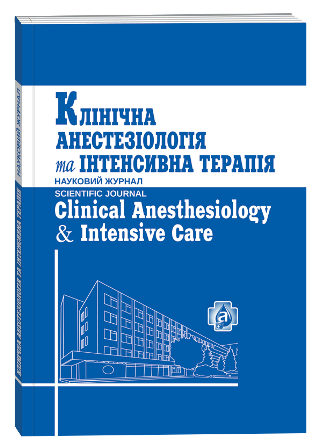LIBERAL vs RESTRICTIVE TECHNOLOGY OF INFUSION THERAPY IN PATIENTS ON THE EARLY STAGES OF ACUTE PANCREATITIS: THE CLINICAL AND ECONOMIC SUBSTANTIATION
Keywords:
infusion therapy, acute pancreatitis, abdominal compartment syndromeAbstract
Urgency. One of the strategic issues in the treatment of patients with severe pancreatitis on the early stage still is the choice of infusion therapy (InfT) technology. An insufficient volume and quality of InfT does not provide adequate tissue perfusion and therefore does not provide an adequate supply of oxygen and pharmacological agents in the area of inflammation. On the other hand, an excessive InfT leads to accumulation of fluid in the interstitial tissues of both the inflammation area and other organs. Material and methods. We have examined 92 patients diagnosed with acute pancreatitis. In 48 patients the examination was performed retrospectively, according to their medical records. All patients underwent a liberal infusion therapy. 44 patients were examined prospectively. In this group of patients a restrictive technology of infusion therapy was used. Results. In patients, who underwent infusion therapy according to the liberal technology, positive fluid balance was 9.3±1.7l in the first 7 days of intensive therapy. At the same time, intra-abdominal pressure was increased to 20±1 mm Hg and respiratory index was reduced (раО2 / FiO2 decreased from 300±10 to 220±8). In the prospective group of patients positive fluid balance was only 1.3±0.6 l, accompanied by significantly lower growth of intra-abdominal pressure and by reduction of respiratory index. Conclusion. The restrictive technology of InfT in patients on the early stage of severe pancreatitis leads to reduction of its complications, including increased intraabdominal pressure and decreased respiratory index.
References
Черний В. И. Актуальные аспекты инфузионной терапии / В. И. Черний // Медицина неотложных состояний. – 2015. – № 3 (66). – С. 43–54.
Cruz-Santamaria D. M. Update on pathogenesis and clinical management of acute pancreatitis / D. M. Cruz-Santamaria, C. Taxonera, M. Giner // World J Gastrointest. Pathophisiol. – 2012. – N 3 (3). – P. 60–70.
Острые панкреатиты: эпидемиология, этиология, патогенез, интенсивная терапия, хирургическое лечение : монография / редкол. : Л. О. Мальцева, О. Б. Кутовой, Ю. Ю. Кобеляцкий [и др.]. – Днепропетровск : ООО «ЛізуновПрес», 2014. – 193 с.
Коновалов С. П. Стандарти діагностики і лікування гострого панкреатиту : метод. рекомендаціїї / С. П. Коновалов, В. П. Терлецький, Г. Г. Рощін. – К., 2005. – 27 с.
Протоколы диагностики и лечения острого панкреатита : пособие для врачей / С. Ф. Багненко, А. Д. Толстой, В. Б. Краснорогов [и др.]. – К., 2007. – 12 с.
Шок при остром панкреатите : пособие для врачей / А. Д. Толстой, В. П. Павлов, Е. В. Захарова, С. А. Бекбаусов. – К., 2007. – 76 с.
Surviving Sepsis Campaign: International Guidelines for Management of Severe Sepsis and Septic Shock: 2012 (SSC – Guidelines: 2012) // Intensive Care Med. – 2013. – Vol. 38. – N 1. – Р. 296–327.
Boyd J. Fluid resuscitation in septic shock / J. Boyd // Crit. Care Med. – 2011. – Vol. 39, N 2. – P. 259–265.
Marik P. E. Does the central venous pressure predict fluid responsiveness? An updated metaanalysis and a plea for some common sense / P. E Marik // Сrit. Care Med. – 2013. – Vol. 41, Is. 7. – P. 1774–1781.
Сessoni M. What is fluid challenge? / М. Сessoni // Current opinion CC. – 2011. – Vol. 17. – P. 290–295.







